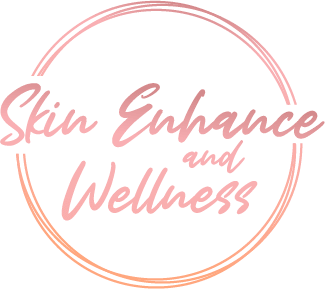We all crave that magical moment of waking up with a radiant and youthful glow. What if the key to achieving this rested and rejuvenated look lies in the seemingly innocuous act of choosing a sleep position? In this blog, I explore how those quiet hours of shut-eye wield a significant impact on the overall health of your skin, influencing the formation of wrinkles.
As a result of repeated muscle contractions, various types of lines emerge, including vertical lines between the eyebrows, horizontal lines on the forehead, lines in the outer corners of the eyes, and vertical lines above or below the lips. Sleep position-related lines manifest as subtle vertical lines in areas such as below the eyes, on the outer forehead, and in the cheeks and jaw region. In youth, when the skin is more resilient, it can bounce back after experiencing pressure effects. However, as we age and collagen levels decrease, the skin loses its ability to revert, leaving behind these persistent lines.
Your aesthetic doctor, with a keen aesthetic eye, can discern subtle signs of a person’s sleep habits, from deeper nasolabial folds to more defined lines around the eyes. The impact of sleep position on wrinkle formation becomes apparent when considering the sheer number of hours exerting pressure on one side of the face over a lifetime – a staggering 2,920 hours a year for those fortunate enough to enjoy a full eight hours of sleep nightly.
The Impact of Sleep Position on Your Skin
While we prioritize skincare routines and adequate sleep, the position in which you sleep might be the missing piece to achieving that coveted youthful glow.
The Pitfalls of Stomach Sleeping Position
Stomach sleeping, often considered a cherished habit, emerges as the least favourable position for maintaining optimal facial skin health. Aptly labelled the worst position, it entails prolonged pressure against the pillow, unleashing a cascade of consequences that accelerate the creation of permanent fine lines and wrinkles.
The perils begin with cyclical swelling and the reinforcement of frown lines, creating a breeding ground for the early signs of ageing. This position, though comforting, compresses the entire face against the pillow, acting as a barrier that obstructs skin follicles. The result? Skin breakouts, clogged pores, and the unwelcome emergence of fine lines. The reduced circulation of blood and fluid flow intensifies the impact, giving rise to puffy eyes and under-eye bags, and hastening the onset of wrinkles.
Beyond the surface, the added risk of bacteria and germs residing on pillowcases further solidifies stomach sleeping as a definite no-go zone for those aiming to preserve the vitality and youthfulness of their facial skin. It’s time to rethink this beloved habit and embrace sleep positions that nurture rather than hinder your skin’s well-being.
The Side Sleeping Position Struggle
Sleeping on your side introduces pressure on one specific side of your face, setting the stage for potential issues. Despite being a seemingly innocuous position, it has its drawbacks, disrupting the natural harmony of your facial features.
Beyond the surface, side sleeping poses a challenge for those diligently applying skincare products. The very act of side sleeping can cause these products to spread onto the pillow instead of being fully absorbed by your skin. This unintentional transfer diminishes the efficacy of your skincare routine, potentially impacting the results you hope to achieve.
In more extreme cases, side sleeping becomes a culprit in the development of facial asymmetry. Years of habitually resting on one side can lead to unevenness in both texture and volume, altering the natural contours of your face. The consequences of side sleeping extend beyond the nighttime ritual, leaving a lasting imprint on your facial appearance.
While side sleeping may be a common choice, understanding its potential downsides empowers you to make informed decisions for the sake of your skin’s health.
Elevate Your Beauty Sleep Game
Keeping your body at a 20-30° angle while sleeping on your back promotes optimal fluid flow, contributing to better circulation throughout. This simple adjustment serves as a preventive measure against facial and neck wrinkles, hindering the skin from folding against patterned linen and pillows that can disrupt your skin’s smooth appearance. The bonus? Say goodbye to any potential facial asymmetry as you embrace the supine position.
The benefits extend beyond the surface, as sleeping on your back allows your entire body to relax, reducing irritation and inflammation. This relaxation fosters a conducive environment for improved cell turnover in the face, a vital process in which dead skin cells are replaced by new ones. It’s a holistic approach to skincare that begins with the choice of sleep position.
To maximize the advantages, elevate your head slightly to prevent fluid build-up and bid farewell to those morning puffy eyes. The supine solution isn’t just a recommendation; it’s a strategic move toward preserving the timeless beauty of your skin. Discover the transformative power of back sleeping and awaken to a revitalized, youthful complexion each morning.


Recent Comments